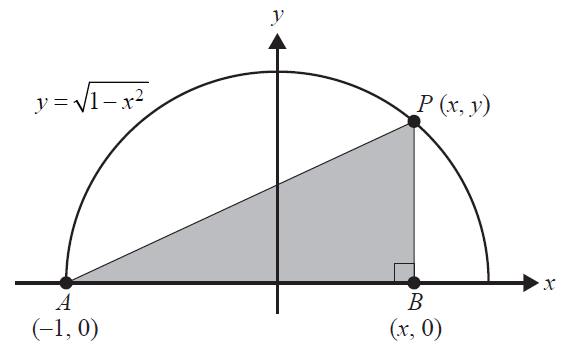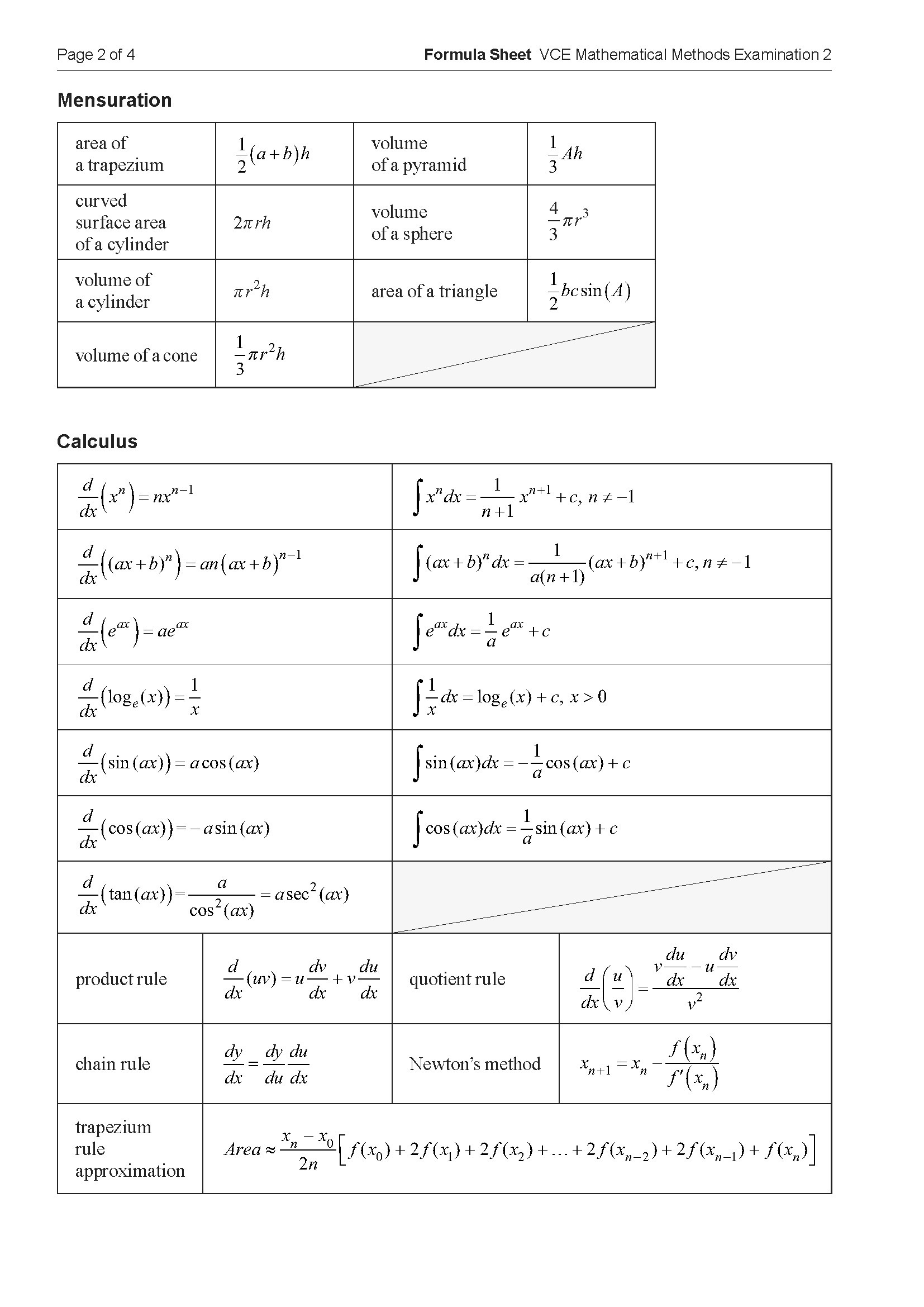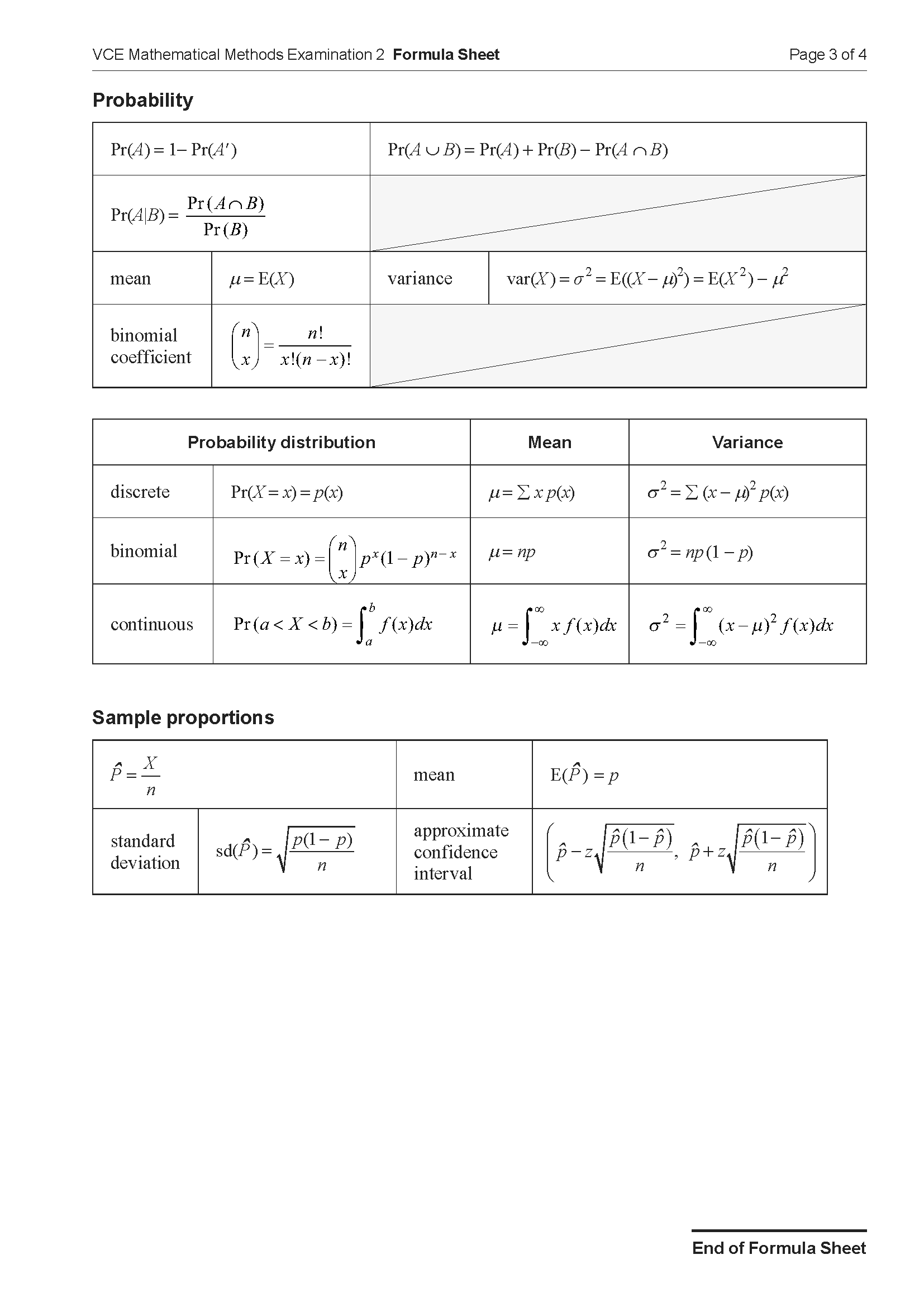2019 VCE Maths Methods Mini Test 7
Number of marks: 9
Reading time: 2 minutes
Writing time: 13 minutes
Section A – Calculator Allowed
Instructions
• Answer all questions in pencil on your Multiple-Choice Answer Sheet.
• Choose the response that is correct for the question.
• A correct answer scores 1; an incorrect answer scores 0.
• Marks will not be deducted for incorrect answers.
• No marks will be given if more than one answer is completed for any question.
• Unless otherwise indicated, the diagrams in this book are not drawn to scale.
Which one of the following statements is true for \(f: R \to R, f(x) = x + \sin(x)\)?
- A. The graph of \(f\) has a horizontal asymptote
- B. There are infinitely many solutions to \(f(x) = 4\)
- C. \(f\) has a period of \(2\pi\)
- D. \(f'(x) \ge 0\) for \(x \in R\)
- E. \(f'(x) = \cos(x)\)
\(A\) and \(B\) are events from a sample space such that \(\Pr(A) = p\), where \(p > 0\), \(\Pr(B|A) = m\) and \(\Pr(B|A') = n\).
\(A\) and \(B\) are independent events when
- A. \(m = n\)
- B. \(m = 1-p\)
- C. \(m+n = 1\)
- D. \(m = p\)
- E. \(m+n = 1-p\)
If \(\int_1^4 f(x)dx = 4\) and \(\int_2^4 f(x)dx = -2\), then \(\int_1^2 (f(x)+x)dx\) is equal to
- A. 2
- B. 6
- C. 8
- D. \(\frac{7}{2}\)
- E. \(\frac{15}{2}\)
Given that \(\tan(a) = d\), where \(d > 0\) and \(0 < a < \frac{\pi}{2}\), the sum of the solutions to \(\tan(2x) = d\), where \(0 < x < \frac{5\pi}{4}\), in terms of \(a\), is
- A. 0
- B. \(2a\)
- C. \(\pi + 2a\)
- D. \(\frac{\pi}{2} + a\)
- E. \(\frac{3(\pi+a)}{2}\)
The expression \(\log_x(y) + \log_y(z)\), where \(x, y\) and \(z\) are all real numbers greater than 1, is equal to
- A. \(-\frac{1}{\log_y(x)} - \frac{1}{\log_z(y)}\)
- B. \(\frac{1}{\log_x(y)} + \frac{1}{\log_y(z)}\)
- C. \(-\frac{1}{\log_x(y)} - \frac{1}{\log_y(z)}\)
- D. \(\frac{1}{\log_y(x)} + \frac{1}{\log_z(y)}\)
- E. \(\log_y(x) + \log_z(y)\)
End of Section A
Section B – No Calculator
Instructions
• Answer all questions in the spaces provided.
• Write your responses in English.
• In questions where a numerical answer is required, an exact value must be given unless otherwise specified.
• In questions where more than one mark is available, appropriate working must be shown.
• Unless otherwise indicated, the diagrams in this book are not drawn to scale.
The graph of the relation \(y = \sqrt{1-x^2}\) is shown on the axes below. \(P\) is a point on the graph of this relation, \(A\) is the point \((-1, 0)\) and \(B\) is the point \((x, 0)\).

a. Find an expression for the length \(PB\) in terms of \(x\) only. 1 mark
b. Find the maximum area of the triangle \(ABP\). 3 marks
End of examination questions
VCE is a registered trademark of the VCAA. The VCAA does not endorse or make any warranties regarding this study resource. Past VCE exams and related content can be accessed directly at www.vcaa.vic.edu.au

